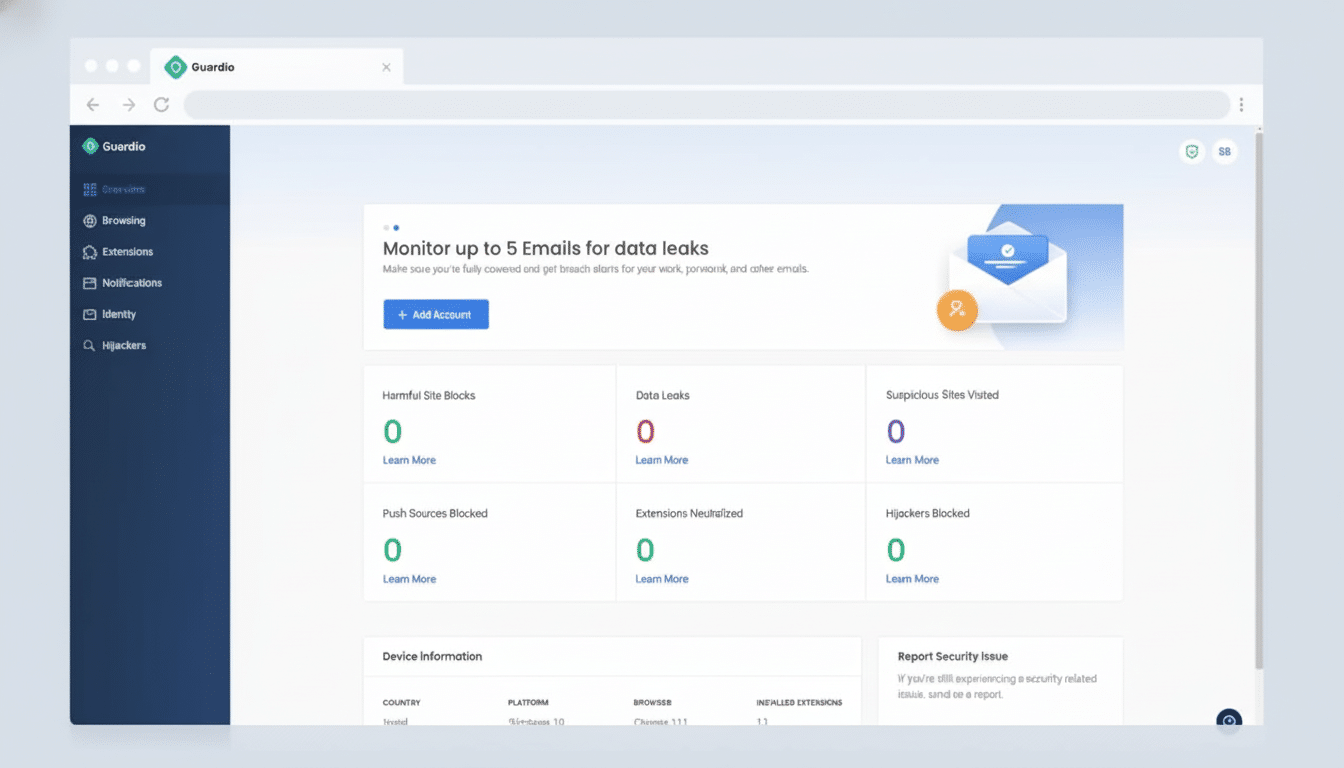Guardio, the security unicorn which uses AI to uncover malicious code and scam infrastructure increasingly spun up with generative AI tools, has closed an $80 million late-stage round led by ION Crossover Partners.
The Tel Aviv-based company, which is best known for its consumer-facing browser and mobile protections, is now expanding its platform to scan AI-built websites and codebases for the telltale artifacts that threat actors use.

From Browser Add-On to AI Threat Hunter Platform
Founded in 2018 by CEO Amos Peled, CTO Michael Vainshtein and chief architect Daniel Sirota, Guardio started as a browser extension that warns users about malicious sites and informs them of data leaks. It’s since expanded into a suite that includes protection against phishing, monitoring of identity information, spam filtering and scam blocking for consumers and small teams.
The following chapter zooms in on the wave of AI itself. Guardio, the company says, is working on detectors for the sorts of patterns that arise with AI-assisted development—imagine fast-mutating phishing pages or reused script fragments; automation scaffolding for moving credentials between accounts more quickly. The company has recently integrated with Lovable, a “vibe coding” website builder which allows it to continually scan user-created websites to shut them down when they pose a risk to how clients present themselves. That tie-up is in response to separate findings that some sites built on fast platforms had serious security holes.
ION Crossover Leads as Guardio Growth Picks Up
ION Crossover Partners led the round, taking on backers Union Tech Ventures, Vintage Investment Partners and Emerge. While the company didn’t announce a valuation, it said that its valuation had more than tripled from its last round—when it raised $47 million led by Tiger Global in 2021—and yet still counted itself as not a unicorn.
ION founder and partner Gilad Shany said his firm has been following Guardio for years, and in this company he sees a rare bridge between consumer scale and deep cyber expertise. It’s the sort of conjunction of forces that has traditionally been impossible: creating world-class detection engines as well as mastering onboarding, retention, and support for millions of users who are not software engineers. The new capital will be used for R&D, additional platform integrations and go-to-market; the company expects to hire 50 people over the next six months.
Product Roadmap and New Platform Integrations
Guardio is today unveiling its visibility tools, based on Teal DLP and SaaS Security Posture Management for the enterprise. Users will be able to see what documents are public (with potentially sensitive information exposed) and which accounts don’t have two-factor authentication—packaged in consumer-friendly workflows rather than a clumsy admin console.

The company is developing optional connectors to services such as Outlook and Facebook that will make account-specific risks and suspicious activity visible. Leadership says these can shift over time, down to the free tier—a maneuver to grow reach while encouraging consumers toward safer defaults. In the Vainshtein-verse, “every consumer is an enterprise” in terms of how many apps and settings and attack surfaces they’re dealing with throughout a given day.
Key Numbers and Broader Market Context for Guardio
Guardio claims 500,000 paying users and says it has hit $100 million in annual recurring revenue, signifying unusual traction in consumer security where incumbents have had a dominating hold. The company’s shift to AI-crafted threats touches a rapidly growing area of risk: The latest full-year report from the FBI’s Internet Crime Complaint Center noted that reported cybercrime losses totaled $12.5 billion, while Verizon’s Data Breach Investigations Report finds that over 68% of breaches have a “human element.”
Generative AI reduces the cycle time between idea and potential exploitation, allowing even low-skilled adversaries to create massive numbers of phishing kits, fake storefronts, and social engineering scripts. That has led defenders to pour more attention on behavior signals and code fingerprints, rather than singling out known bad domains. Guardio’s wager is that consumer-grade solutions can provide enterprise-level coverage with the simplicity tax.
What to Watch Next as Guardio Scales AI Defenses
The new investment rounds out a crowded and evolving landscape that Guardio now plays in. DevSecOps vendors scan source code for vulnerabilities, and large platforms maintain blocklists and Safe Browsing services, but the explosion of AI-generated microsites and one-off campaigns demands near-real-time detection that is tuned to ephemeral infrastructure. Look for Guardio to expand on its integrations with low-code and AI website builders, enhance its artifact detection engine further, and extend consumer education through automated hardening recommendations.
If it can continue to scale detection caliber—without compromising the user experience or consumer quality—then Guardio could become a common-sense protection for the age of AI-powered schemes, meeting attackers where they are increasingly launching just as quickly.

